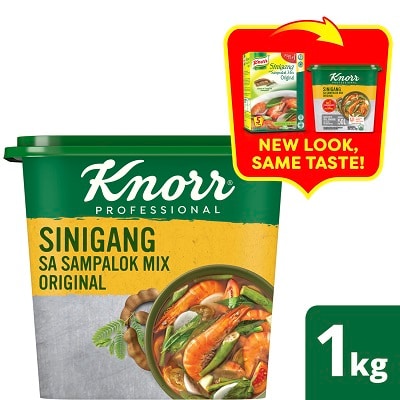“A customer talking about their experience with you is worth ten times that which you write or say about yourself,” says entrepreneurial coach David J. Greer. In such a competitive restaurant industry, where success can feel elusive, customer feedback is a game-changing tool. It drives business growth and informs decisions. More importantly, it helps you build trust and lasting connections, turning satisfied diners into loyal advocates – and winning back unsatisfied ones.
This guide will show you how to craft an effective restaurant customer feedback form. Plus, you’ll learn strategies for customer feedback management, ensuring no valuable insight goes to waste.
What Is Customer Feedback?
Customer feedback refers to the opinions, suggestions, and reviews your guests share about their dining experience. Did they enjoy their visit? What went wrong?
The insights you gather highlight what your guests love, pinpoint areas needing improvement, and reveal trends. This valuable data helps you understand diner preferences and adjust your operations to create better experiences.
The Importance of Customer Feedback

Whether you run a hole-in-the-wall spot or a fine-dining restaurant, gathering feedback provides benefits for long-term success, including:
- Improving guest satisfaction: Knowing diner preferences allows you to personalize offerings and services.
- Building customer loyalty: Promptly addressing concerns establishes trust and ensures repeat visits.
- Streamlining operations: Feedback identifies inefficiencies, helping reduce waste and optimize workflows.
- Optimizing your menu: Guest input guides menu adjustments, keeping bestsellers and introducing profitable additions. For example, if multiple guests mention that a dish lacks flavor, this is a cue to experiment with ingredients like Knorr Liquid Seasoning.
- Increasing revenue: Happy diners are likely to return and try other menu items.
- Expanding market reach: Satisfied customers act as brand ambassadors through word-of-mouth recommendations.
- Enhancing staff performance: Constructive feedback highlights areas for improvement in service and training.
- Strengthening your reputation: Listening to customers shows that you value their opinions, creating a positive brand image.
How to Create a Restaurant Customer Feedback Form

When crafting your feedback form, the key is balance. The sheet should be simple enough to encourage guests to complete it without feeling overwhelmed. But it should also be detailed enough to provide valuable insights. Here are the steps to follow:
Step 1: Identify your goals.
What specific information would you like to get from your guests? Setting clear targets ensures you know what questions to ask and how to structure your feedback form effectively. Consider focusing on the following aspects of your operations:
- Food quality and presentation
- Service attentiveness, efficiency, and friendliness
- Ambience and comfort
- Cleanliness of facilities
- Value for money
- Overall dining experience
Step 2: Choose your questionnaire format.
The format of your feedback form should align with your target market’s preferences and habits. Prioritize convenience and accessibility to ensure diners can easily provide their input. Choose from the following:
- Printed feedback forms: Keep them simple and direct, making them ideal for in-house customers.
- QR codes: Allow guests to scan and access the survey on their mobile devices.
- Online surveys: Choose a platform like Google Forms or Typeform to collect and organize data.
- Point-of-sale prompts: Integrate feedback requests into receipts.
- Kiosk or tablet surveys: Set up devices for quick on-site feedback.
Step 3: Ask the essential questions.
Craft specific, concise questions to get feedback from customers. Avoid overly personal queries; stick to what’s essential for your operations. Consider offering anonymity to encourage honest responses and clearly label optional fields for flexibility. Here are some sample questions:
- What did you order?
- Was your food served on time?
- What did your server do well?
- How likely are you to recommend us to others?
- Do you have other comments or suggestions?
Step 4: Diversify your feedback methods.
Don’t structure your feedback form like a monotonous Q&A sheet or an essay exam. Use a mix of question types, including open-ended prompts, rating scales, and yes/no options. These varied methods of obtaining customer feedback make it quicker and easier for guests to provide comprehensive feedback.
Step 5: Design a user-friendly form.
Once you’ve drafted your questionnaire, focus on creating a visually appealing and easy-to-navigate form. Keep the layout clean, with a logical flow that guides guests effortlessly. Avoid excessive fluff or unnecessary details; this is a feedback tool, not a marketing brochure.
Sample Restaurant Customer Feedback Form
Use this template to customize your form or create a tailored survey that meets your needs.

How to Ask for Feedback From Customers
Follow these tips to encourage meaningful responses and gather valuable insights:
- Ask customers to fill out the form only after finishing their meal. Handing out the form too early may disrupt the dining experience.
- Train your staff to mention the feedback form politely. Instruct them to explain its purpose and reassure guests that it takes little time to complete.
- Offer incentives for all comments, positive or negative. A thank you message for customer feedback is essential, either verbally or on the form. To boost response rates, consider providing small rewards such as gift certificates, freebies, or discounts on their next visit.
- Provide your contact information so customers can easily reach out if they have additional feedback or concerns.
How to Respond to Customer Feedback

Follow this three-step process to address customer concerns quickly and professionally. The goal is to demonstrate that their feedback is valued and acted upon. Whenever possible, address concerns in person, especially if raised verbally; if not, reach out to the customer as soon as possible.
- Acknowledge the feedback: Thank the customer and assure them their input is valued.
- Address the issue: Restate the concern, identify key details, and outline the steps you're taking to improve.
- Offer a remedy: Build trust by providing a prompt resolution. For example, if the issue is food temperature, offer a voucher for a return visit to try the dish again.
Act on all customer feedback promptly. Train your staff – from managers to servers – to handle and escalate issues effectively. At the end of each month, analyze the feedback and identify recurring concerns. Use these insights to adjust your operations accordingly. Finally, track progress to measure how new feedback compares to previous results.










